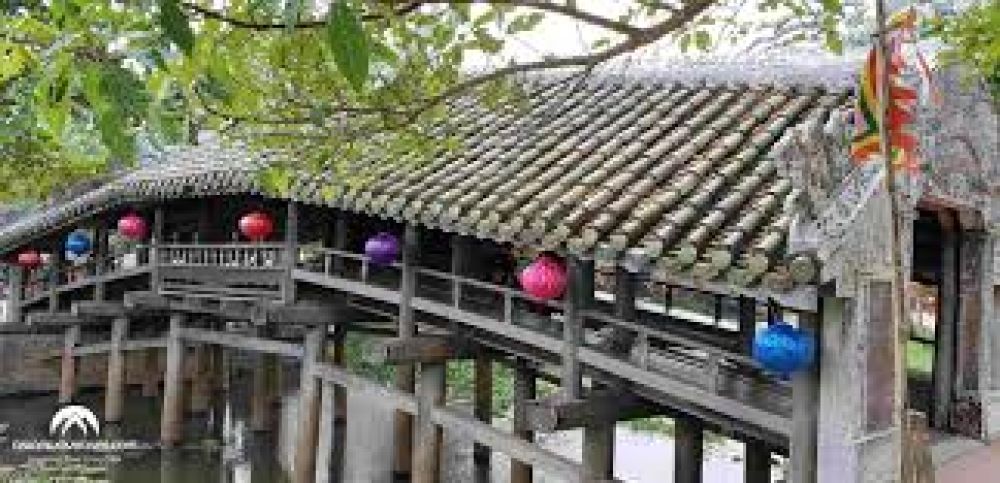

The Thanh Toan Bridge, often referred to as the "Japanese Covered Bridge," is an iconic symbol of Hue, Vietnam. This bridge is not only a testament to the architectural ingenuity of the bygone eras but also a charming attraction that beckons travelers from all over the world. Its historical significance and quaint rural setting provide a peaceful escape from the hustle and bustle of Hue's city life.
The Thanh Toan Bridge dates back to the 18th century during the reign of Emperor Le Hien Tong. It was originally constructed by a local villager named Tran Thi Dao who desired to create a convenient passage for the inhabitants. The bridge is a beautiful representation of ancient Vietnamese design and has stood the test of time as a connection between the two banks of the Nhu Y River. Over the years, it has been preserved and repaired several times to maintain its original grandeur.
The bridge boasts a unique combination of Vietnamese and Japanese architectural elements, which has sparked curiosity among cultural enthusiasts. With a length of 17 meters and a width of 4 meters, it features a roof covered with tubular tiles and is supported by wooden pillars. Its arch shape not only provides structural stability but also adds to its aesthetic appeal.
Tourism at Thanh Toan Bridge started becoming significant during the late 20th century when Vietnam opened its doors for international travelers. Visitors are drawn to both its historical context and picturesque surroundings, contributing to the bridge's status as a top-tier attraction in Hue. Local authorities and community members have made concerted efforts to preserve the bridge and promote local culture, which in turn has influenced the sustainable growth of tourism in the region.
In recent years, there has been a shift towards authentic and immersive experiences in travel. Tourists visiting Thanh Toan Bridge have the opportunity to engage with the local way of life. The adjacent village provides a cultural backdrop where traditional farming practices and local markets offer a vivid snapshot of Vietnamese rural living. Additionally, the bridge has become a featured stop in bicycle and motorbike tours, highlighting the area's scenic landscapes and contributing to eco-friendly tourism trends.
The impact of tourism on Thanh Toan Bridge and its surroundings has been double-edged. While it has improved economic conditions and highlighted the importance of heritage conservation, it has also placed a responsibility upon local authorities to manage the influx of tourists sustainably. Efforts are underway to balance the demand for accessibility with the need to protect the integrity of this historic structure.
When visiting Thanh Toan Bridge, tourists can explore the nearby agriculture museum, which provides insight into the agricultural methods used in the region. Additionally, various festivals and celebrations are held annually, which give a closer look at Vietnamese customs and traditions. The best time to visit is during the Harvest Festival when the bridge and village come alive with vibrant local culture.